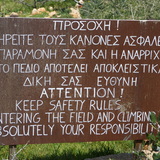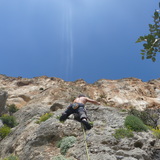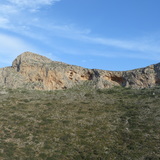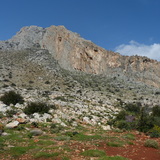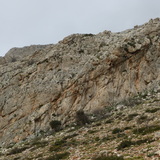A new rock climbing paradise is being developed in Laconia on Cape Maleas, since ancient times an important shipping lane and one that has often struck terror into the hearts of seamen. The cape is in the area known as Vatika, which is derived from the name of the ancient town of Vies.
Sheer rock faces rise up all around the cape, where a network of trails winds throughout the rugged scenery. Speliologists will find a number of caves scattered among the rocks, surrounded by the wide open sea bordered by peaceful coves.
The first climbing area is at Zobolo. The limestone face consists of terrain accessible for all levels of competence, with stalagmites, vertical rocks, crevasses, caves and many other features. It has great potential for competitive climbing, or traditional climbs of up to five pitches.
In all three areas there are routes of varying levels of difficulty. For those who like a challenge, there are more difficult routes on the Hioni area that have not yet been opened up.
Visit the amazing fossilized palm forest. You will find signs on the way to the crag
The quality of the rock is excellent and the routes have been well secured, making the climbs enjoyable and safe.
The local cultural association provides free accommodation and equipment (by arrangement with Panayiotis Livanos) for climbers who would like to open up routes on existing walls. Panayiotis Livanos (6972697754) for accommodation and equipment.
For climbers who simply wish to visit, the closest accommodation is in Neapoli. Good restaurants are to be found in Aghios Nikolaos, Profitis Ilias and at Rismari beach.
